MEDDIC Sales Qualification Process: All-In-One Guide
Casey O'Connor
MEDDIC is a framework that helps salespeople better qualify their prospects, improve the quality of their pipeline, and close more deals.
The MEDDIC sales process revolves around salespeople asking prospects specific questions related to the following categories: Metrics, Economic Buyer, Decision Criteria, Decision Process, Implication of Pain, and Champion.
In this article, we’ll go over everything you need to know about how to implement the MEDDIC sales methodology in your sales process, including its benefits, how to implement it at your organization, and the exact questions you need to ask prospects to use the framework effectively.
Here’s what we’ll cover:
- What Is the MEDDIC Sales Methodology?
- MEDDIC Sales Qualification Process Steps
- Benefits of Using MEDDIC
- MEDDIC vs. MEDDPICC
- How to Implement the MEDDIC Sales Process
- MEDDIC Sales Best Practices
What Is the MEDDIC Sales Methodology?
The MEDDIC sales process is a B2B sales methodology that prioritizes thorough and efficient lead qualification.
The MEDDIC theory and accompanying framework were created in the 1990s by Jack Napoli and Dick Dunkel. They developed and implemented MEDDIC at their company Parametric Technology Corporation (PTC). MEDDIC helped Napoli and Dunkel triple PTC sales from $300 million to $1 billion in just 4 years.
According to the MEDDIC sales methodology, prospects that are well-qualified early in the sales process are far more likely to close. With that in mind, the MEDDIC framework revolves around salespeople following a structured and thorough lead qualification process.
The acronym MEDDIC stands for the qualification criteria used in the process: Metrics, Economic Buyer, Decision Criteria, Decision Process, Identify Pain, and Champion.
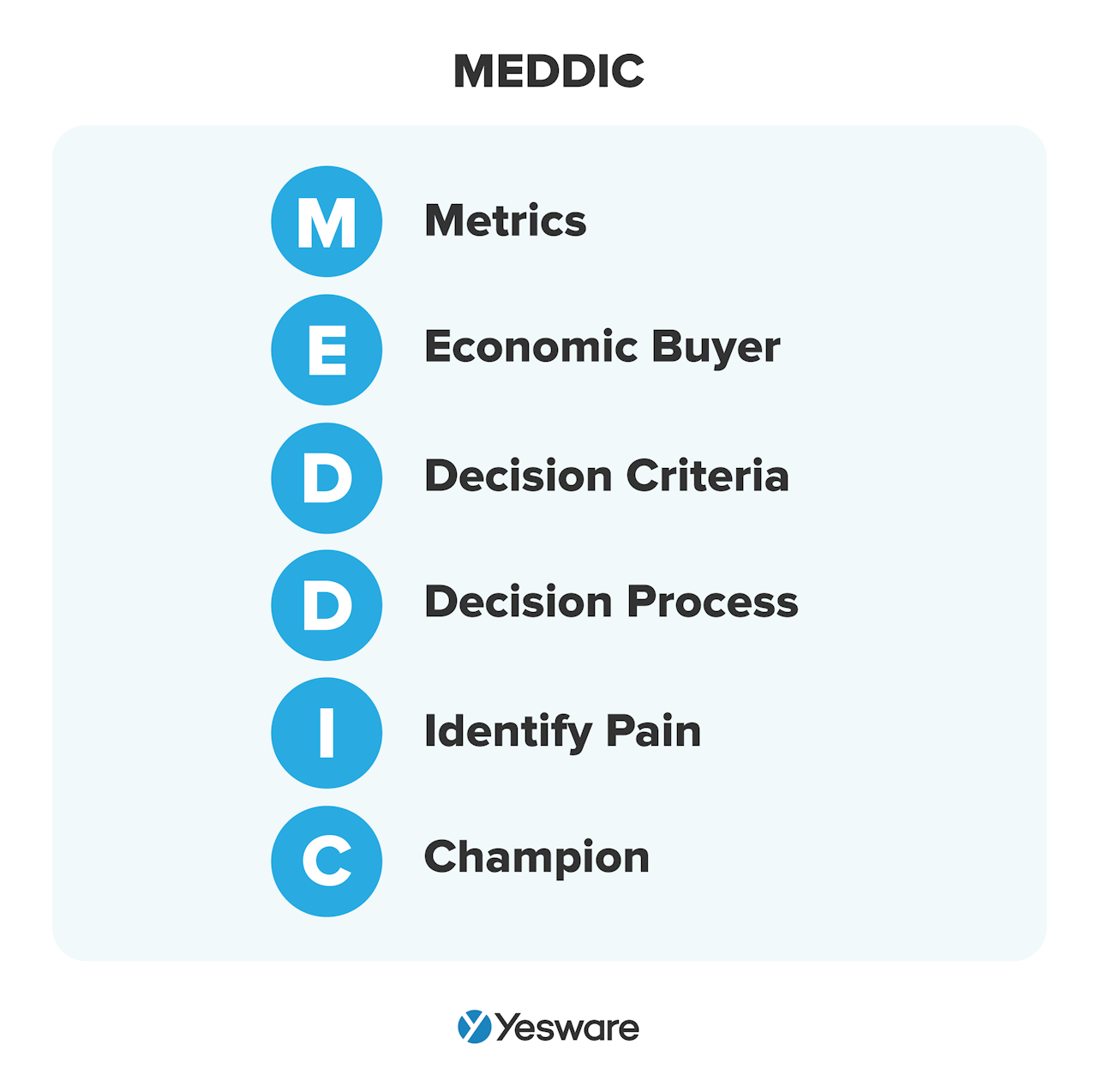
MEDDIC sales is based loosely off the SPIN selling methodology. Although MEDDIC is more thorough; its questions cover more ground and go deeper into the prospect’s pain than those in the SPIN process.
MEDDIC helps sales reps know where to dedicate their energy and resources. The questions asked during the MEDDIC sales process shed light on which customers are most likely to find value within your sales funnel and, ultimately, with your product. These prospects are where sales reps should spend their effort, and MEDDIC helps identify them.
MEDDIC Sales Qualification Process Steps
Sales reps following the MEDDIC sales qualification process ask their prospects a series of open-ended, insight-provoking questions that help the sales rep determine with confidence whether they’re a good fit for the product.
MEDDIC simplifies a process that many sellers struggle with; RAIN Group research illustrates that salespeople’s biggest challenge is prospecting.
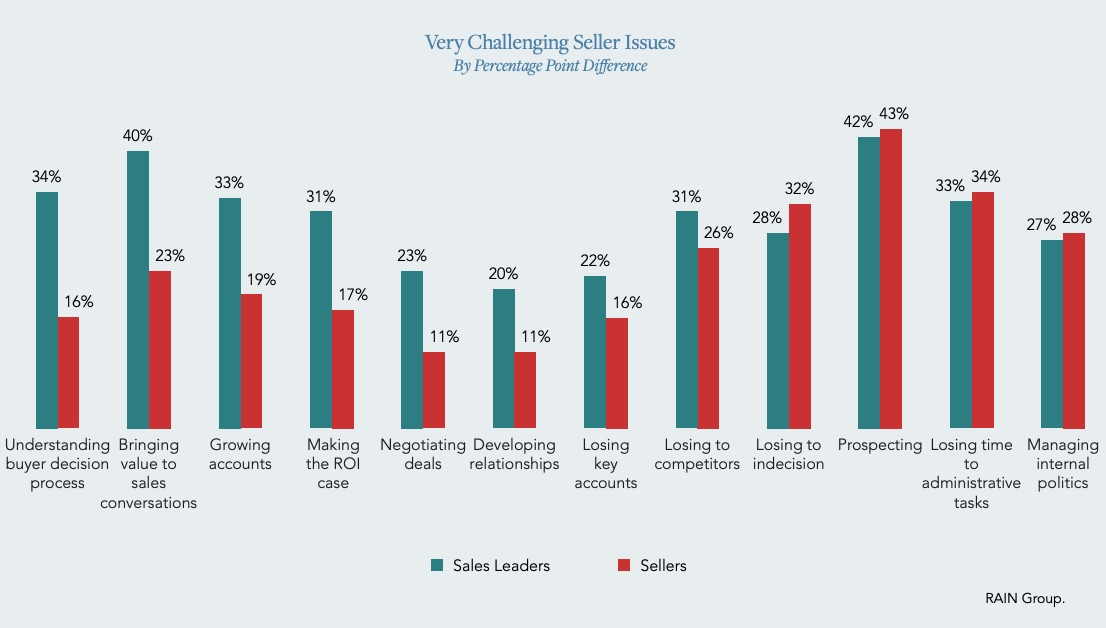
MEDDIC helps sales reps prospect and qualify leads by outlining pre-determined questions around the following topics: Metrics, Economic Buyer, Decision Criteria, Decision Process, Implication of Pain, and Champion.
Let’s break down each of these below.
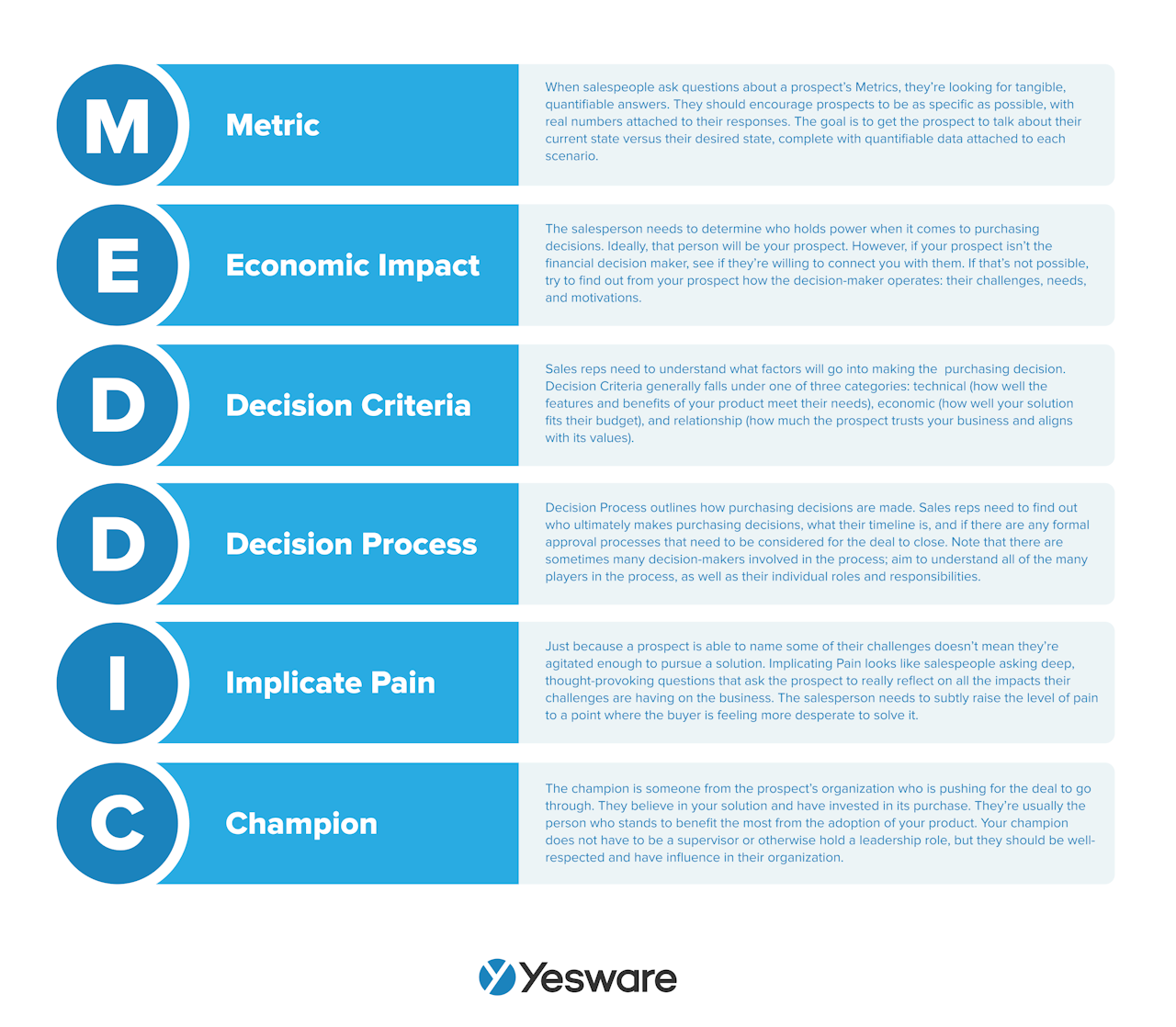 Metrics
Metrics
When salespeople ask questions about a prospect’s Metrics, they’re looking for tangible, quantifiable answers. They should encourage prospects to be as specific as possible, with real numbers attached to their responses. The goal is to get the prospect to talk about their current state versus their desired state, complete with quantifiable data attached to each scenario.
Quantifiable data from the prospect’s real-life circumstance helps salespeople personalize their value offering — and back it up with a specific and highly accurate ROI analysis.
Here are a few examples of questions you can ask during the Metrics phase of the MEDDIC process:
- What short-term and long-term goals are you hoping to achieve? Be as specific as possible.
- What are your most important KPIs?
- How do you measure success, as a team and company-wide?
- What sales metrics are most important to your team? What are the baseline data around those metrics? And what is your desired growth?
The key here is to find out what (data-specific) gains the prospect hopes to realize as a result of investing in your solution. You can then frame your pitch around those needs, and offer quantifiable proof that your solution will create economic gain for them.
Economic Buyer
When addressing the Economic Buyer component of the MEDDIC framework, the salesperson needs to determine who holds power when it comes to purchasing decisions and spending authorization.
Ideally, that person will be your prospect — but that won’t always be the case. If your prospect isn’t the financial decision-maker, see if they’re willing to connect you with that person. If that’s not possible, try to at least find out from your prospect how the decision-maker operates, what their motives are, and how to meet their needs when it comes to making purchases.
This step is as critical as any other in the framework; research shows that the vast majority of slipped deals did not include the salesperson connecting with the true economic buyer. On the other hand, most closed deals included conversation between the two parties.
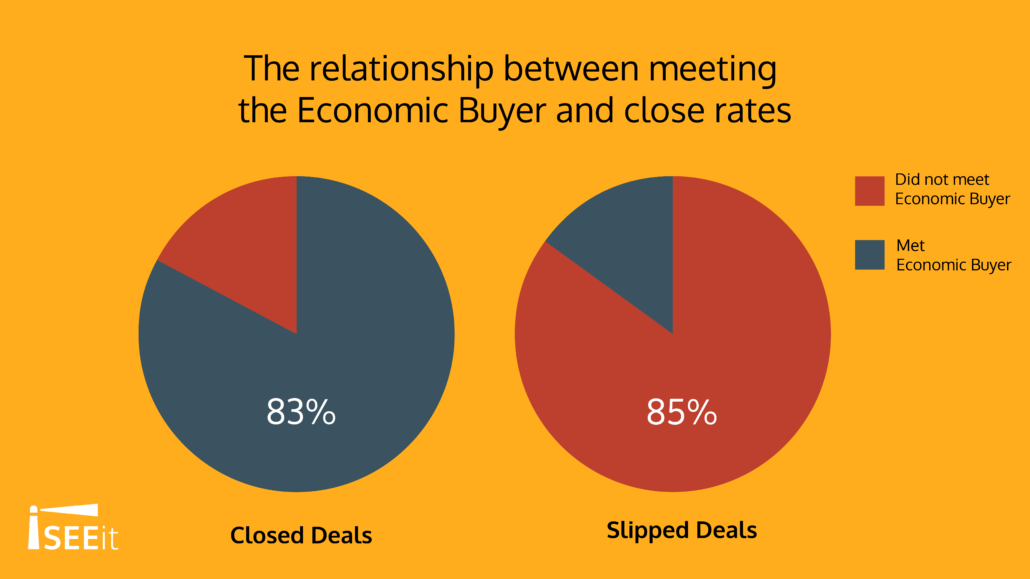
Here are some questions you might ask to learn more about the Economic Buyer:
- What is your role in the decision-making process?
- Is anyone else involved in purchasing decisions?
- Who will ultimately sign the contract?
It’s important to note that the Economic Buyer is not necessarily the same person as the Budget Owner. Economic Buyers have more power; they actually create and own the budget. The Budget Owner oversees the implementation and adherence to the budget, but doesn’t necessarily create it. The Economic Buyer has all the influence over how money gets spent.
The key in the Economic Buyer stage is to identify and, ideally, connect with the financial gatekeepers that need to give approval before the deal can close.
Decision Criteria
The next step of the MEDDIC sales process is to determine the prospect’s Decision Criteria. This means that sales reps need to understand what factors will go into making the decision.
Learning this information can help salespeople stand out against the competition.
Decision Criteria may include things like:
- Ease of use
- Onboarding process
- Simplicity of integration
- Budget needs
- Potential ROI
- Level of customer support
- Your brand’s reputation
Each prospect’s Decision Criteria will be unique, but they generally fall under one of three categories: technical (how well the features and benefits of your product meet their needs), economic (how well your solution fits their budget, as well as how much of an ROI it can provide), and relationship (how much the prospect trusts your business and aligns with its values).
Here are some questions sales reps might ask during the Decision Criteria stage:
- What are the most important criteria you look at when making purchasing decisions?
- How will you justify this purchase to investors and stakeholders?
If the prospect doesn’t have these needs defined, encourage them to identify and record them on paper. The more concrete you can make this process, the better; clearly-defined Decision Criteria will help sales reps tailor their offer directly to their unique needs.
Decision Process
In addition to Decision Criteria, MEDDIC asks salespeople to also uncover information about the Decision Process.
There are small but important differences between Decision Criteria and Decision Process. Decision Criteria tells sales reps what information prospects will use to make decisions, while Decision Process highlights how those decisions are made.
When asking questions about the Decision Process, sales reps should find out who ultimately makes purchasing decisions, what their timeline is, and if there are any formal approval processes that need to be considered for the deal to close. Note that there are sometimes many decision-makers involved in the process; aim to understand all of the many players in the process, as well as their individual roles and responsibilities.
The following questions will help guide you through the Decision Process stage of the MEDDIC sales process:
- Who needs to be involved in the final stages of the discussion in order to approve the deal?
- What kind of paperwork is required in the decision process?
- What are the most important terms and conditions we need to meet in order for this to be approved?
Learning about the prospect’s Decision Process helps sales reps work proactively to present themselves as the most attractive deal on the table.
Implicate Pain
When sellers work to Implicate Pain through the MEDDIC framework, they’re going beyond simple identification of pain points. Just because a prospect is able to name some of their challenges doesn’t mean they’re agitated enough to pursue a solution.
The MEDDIC framework requires that salespeople ask deep, thought-provoking questions that ask the prospect to really sit in their pain and reflect on all the impacts their challenges are having on the business. The salesperson needs to subtly raise the level of pain to a point where the buyer is feeling more desperate to solve it.
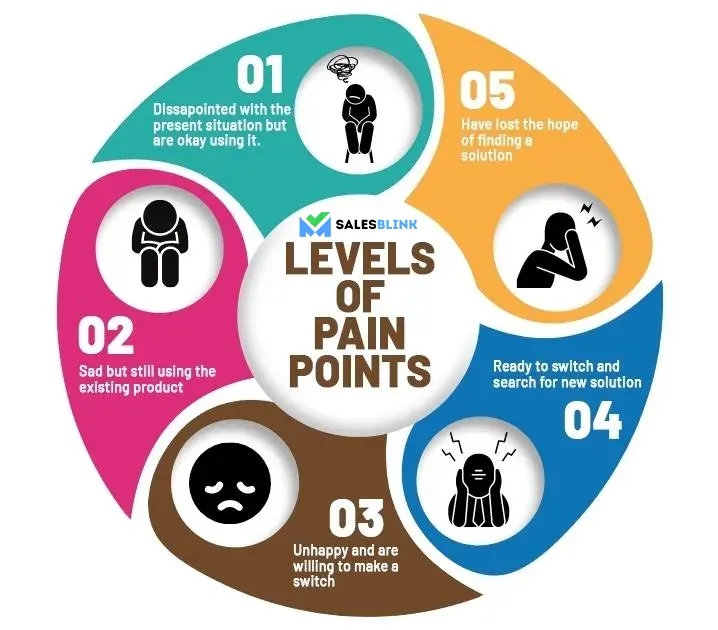
Pain points can take all shapes and sizes, and some prospects may be experiencing many at once. Common challenges include cost, production times, and how quickly a company can generate revenue.
Regardless of the topic, though, the strongest and most solvable pain points are attached to numbers. Encourage your prospect to frame their pain around specific data whenever possible — frame your solution around those numbers, too.
Here are some questions you might ask during the Implicate Pain stage of the MEDDIC sales process:
- Describe your current problem.
- What takes up the most time in your day?
- What has prevented you from solving your problem in the past?
- How is this problem affecting you, your team, and your business?
- What will happen if you do nothing to solve this problem?
All this is not to say that you need to be obnoxious or rude — don’t twist the knife when prospects are really struggling. Remember: your goal is to build trust and offer reassurance that you can solve their problem. But do help them consider the ramifications of what life might look like if they don’t start implementing a solution soon.
Champion
The “C” in MEDDIC stands for champion. A salesperson’s champion is someone from the prospect’s organization who is pushing for the deal to go through. They believe in your solution and are invested in its purchase.
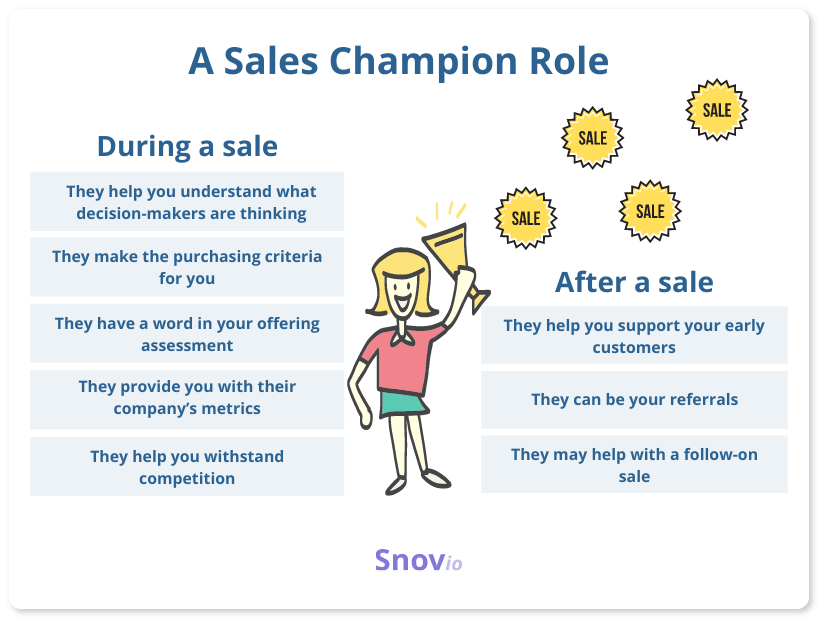
Usually, but not always, the champion is the person who’s most negatively affected by the current pain points. They stand to benefit the most from adoption of your product. Because of their urgent need to solve the problem, they help keep your product top-of-mind with the decision-makers who will ultimately approve the deal.
Here are some questions you can ask during the Champion phase:
- What is your stake in the product or solution?
- How would your day-to-day life change with adoption of the product?
- How would you describe the benefits of the solution to others at your company?
Your champion does not have to be a supervisor or otherwise hold a leadership role, but they should be well-respected and have influence at their organization.
Tip: Organize your prospect research in one place with the template below.
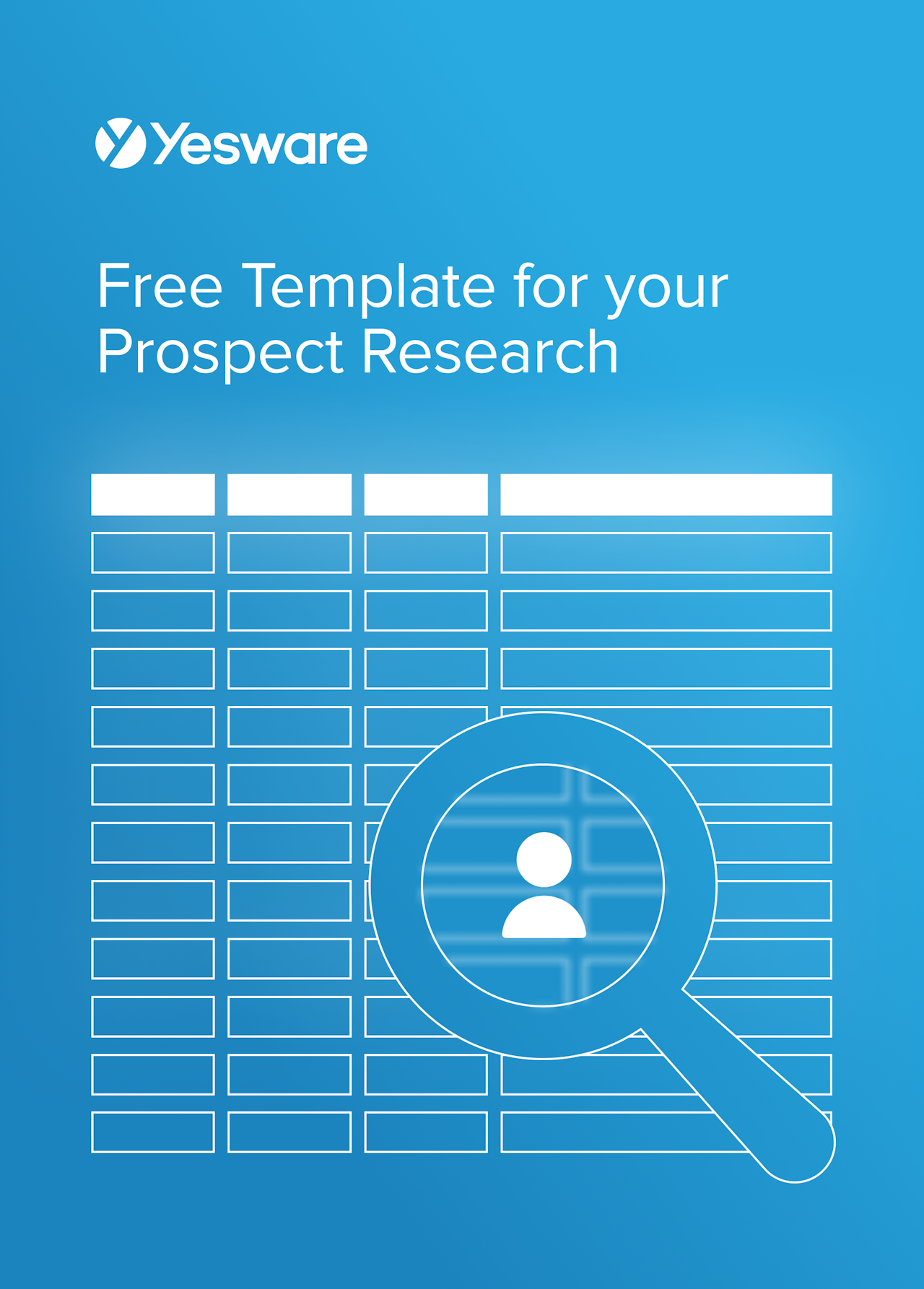 Free Template for Your Prospect ResearchThis customizable template will help you organize all prospect research in one place so you can quickly personalize outreach.
Free Template for Your Prospect ResearchThis customizable template will help you organize all prospect research in one place so you can quickly personalize outreach.
Benefits of Using MEDDIC
One of the best things about the MEDDIC framework is that it’s pretty much universally successful for teams that implement it properly. Every sales pipeline improves when the leads that come through are better qualified.
MEDDIC benefits salespeople and their overall organizations in several ways.
Highly Qualified Prospects
The MEDDIC framework helps sales reps collect all of the information they need to accurately and thoroughly qualify leads.
According to a thorough Pipedrive study, prospecting is the second-most time-consuming task on their schedule — next only to actual selling.
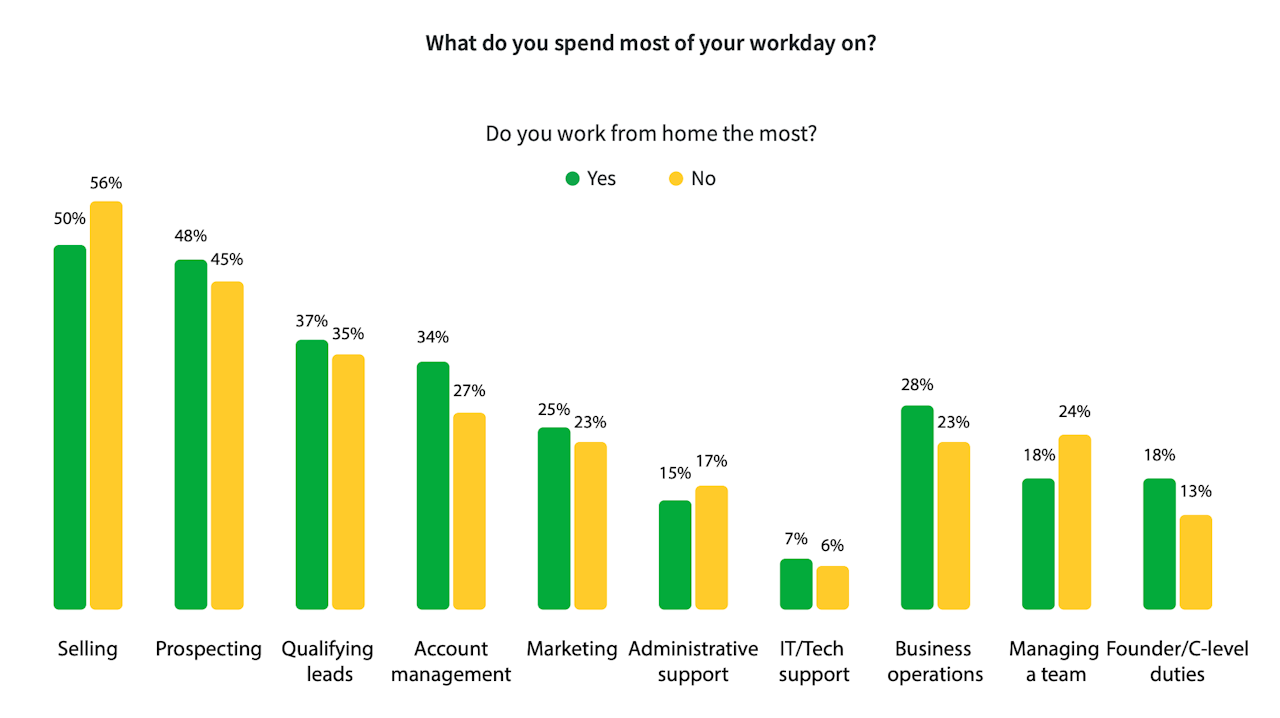
The MEDDIC framework helps sales reps focus on questions that get to the heart of what the prospect is really looking for in a solution, and whether your product will be a good fit for them. It uses real numbers to evaluate whether the product will provide a worthwhile ROI.
Pitching to a higher percentage of your best-qualified prospects results in a higher close rate, happier sales reps, and a more satisfied customer base.
Easy to Implement
The MEDDIC sales process is very straightforward. It’s based on gathering knowledge, rather than sales savviness or psychology hacks. This means that it’s extremely easy to teach and train sales reps in the process.
There are, of course, some best practices and tips that will help salespeople become more skilled at the process — more on those later — but it’s easy enough for even the least-experienced sales rep to quickly learn, implement, and practice.
Better Strategy Decisions
In addition to being easy to implement, MEDDIC also makes strategic, big-picture questions easier to tackle.
With better-qualified prospects, sales managers can more easily predict which deals are most likely to close. This creates more accurate sales forecasts (and happier C-suite executives and investors, too).
MEDDIC also helps sales reps make better use of their CRM. The framework and its questions empower salespeople to collect high-quality, actionable sales data that dictates what they need to do next in order to close. It also helps managers and those in sales coaching positions determine exactly what kind of feedback to provide to drive tangible progress and growth.
Improved Internal Functions
Although MEDDIC gets most of its credit due to how well it helps sellers approach leads and prospects, it also has tremendous benefits for the inner workings of the sales team.
First, the framework helps organizations retain sales talent. Because it’s so easy to learn and master, many sales reps find confidence in the process. MEDDIC helps salespeople of all experience levels better understand their prospects and improve their selling skills.
MEDDIC also helps sales teams develop a common language around prospecting and the sales process in general. Everyone has a clear understanding of what they need to know in order to move a deal forward. The sales team is a cohesive, highly-functioning team of individually-successful reps that are all working toward a common, mutually-understood goal. That cohesion is extremely powerful in generating tangible results for a sales organization.
Although MEDDIC can be effective for just about any sales team in any industry, SaaS organizations find it particularly effective. It also works really well for companies that have complex contracting and/or decision-making processes.
MEDDIC vs. MEDDPICC
In more recent years, some salespeople and strategists have pushed for an update to the MEDDIC sales process.
The existing steps are great, they argue, but there’s a couple of pieces missing in the formula. For this reason, some salespeople choose to follow the “MEDDPICC” framework instead.
MEDPICC includes all of the standard components of the MEDDIC sales process, but also adds a “P” for “Paperwork Process,” and “C” for “Competition.”
Although the paperwork aspect is addressed a little bit in the Decision Process stage, many MEDDIC deals have so much of it that it requires its own step. There are also sometimes additional parties from the prospect’s organization that need to be pulled into the paperwork stage. This step can be laborious enough that many sellers argue it needs its own stage in the MEDDIC sales process.
The additional “C” in MEDDPICC stands for Competition. This stage asks sellers to discover who else the prospect might be considering in their search for a solution. And, further than that, sales reps also need to gauge how the prospect feels about those competitors. Are there any that stand out? What are their USPs? What would be the tipping factor between your organization and yours?
In reality, the acronym is less important than the big picture: MEDDIC aims to help salespeople discover as much as possible about what rules in or rules out specific prospects. The primary goal of the framework is to identify the most highly-qualified prospects so that the pipeline is full of viable options. Ask as many questions as needed to reach that goal.
How to Implement the MEDDIC Sales Process
The MEDDIC sales process can benefit just about any sales organization. It works well for companies of all sizes and in all markets.
MEDDIC is incredibly beneficial for any company that wants to:
- Strengthen the quality of their pipeline
- Improve accuracy of sales forecasts
- Close more deals
- Simplify complicated contracts and/or decision-making processes
- Position themselves as the best offer among their competition
If you think MEDDIC might be a good fit for your team, the following steps will help you implement the process.
1. Evaluate Your Baseline
Start by auditing your current discovery call process. How much of the MEDDIC framework do you already cover? It’s likely that many sales teams already rely on at least some components of MEDDIC, even if it’s not in the exact format prescribed by the approach.
One easy way to run this kind of audit is to keep a MEDDIC template nearby as you make calls. No need to try to follow it; conduct your calls as you normally would.
As you ask questions and gather information from prospects, make note on your template of any question or response that seems like it could potentially align with the MEDDIC framework.
The idea in this initial stage is to identify which parts of your qualification process are also present in MEDDIC, which of those are currently effective, and which are missing and will need to be added to the process.
2. Become an Expert on Your Buyer Personas
As you get ready to implement MEDDIC, it’s crucial that your sales reps are all well-versed in the details of your ideal customer profile (ICP) and the various buyer personas you may encounter.
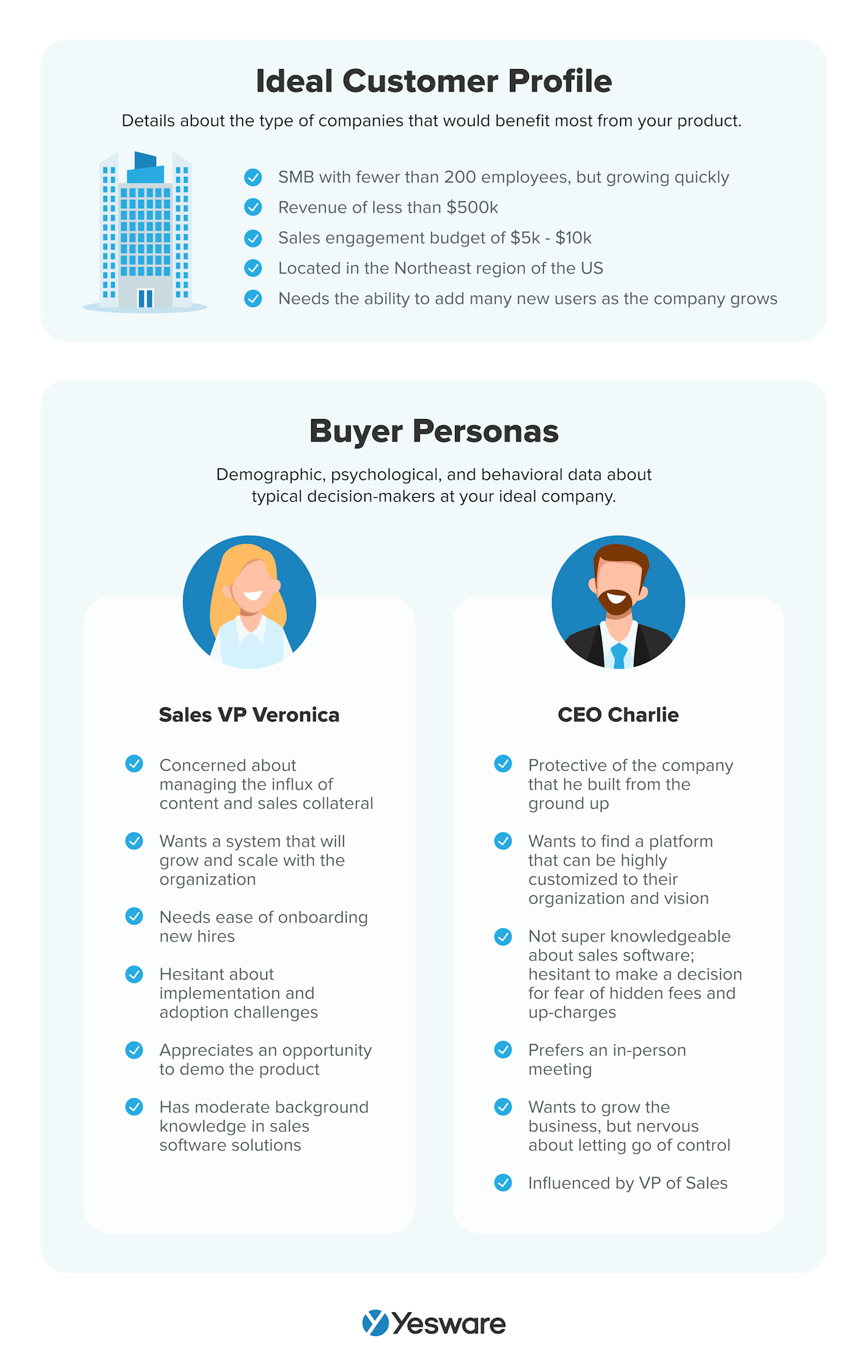 The more in-depth these profiles can be, the better your sales reps will do with the MEDDIC framework. Detailed ICPs and especially buyer personas can help sellers shape their questions and conversations with targeted, relevant content and a highly personalized offer.
The more in-depth these profiles can be, the better your sales reps will do with the MEDDIC framework. Detailed ICPs and especially buyer personas can help sellers shape their questions and conversations with targeted, relevant content and a highly personalized offer.
Use your ICP and buyer personas to draw up a list of general questions that align with the MEDDIC framework. As you prepare for each individual discovery call, or additional sales conversation, you can tweak the questions to make them even more specific.
3. Standardize the MEDDIC Process
Now that you know where gaps exist in your qualification process, and what your buyers will most likely be looking for in the sales process, it’s time to map out how MEDDIC will look at your particular company.
One of the most important parts of this step is to ensure that each stage is standardized and codified. This means that all salespeople will gather a standard set of information for each stage of the process.
For example, your MEDDIC framework might dictate that sellers cannot complete the “Decision Process” stage until they see a copy of all paperwork that will be required for the deal to close.
Or you might say that sales reps need to gather data on the prospect’s revenue, year-over-year growth, and customer acquisition cost (CAC) before they complete the “Metrics” stage.
The specifics of your MEDDIC approach will vary based on your team’s sales process, your industry, and your buyer’s needs and expectations. The point is to ensure that everyone on the team is on the exact same page — with concrete criteria and benchmarks — about how the MEDDIC sales process will flow from beginning to end.
4. Train and Coach
After the process is firmly outlined, it’s time to deploy it. Make sure everyone on the team receives thorough, timely, and continuous training and coaching on your specific MEDDIC sales process as you implement it in your sales process.
5. Improve as Needed
Implementing the MEDDIC sales process is relatively straightforward, but that doesn’t mean your team is expected to perfect it right away.
Be sure to track your efforts carefully. Record your progress, challenges, and lessons learned about the framework, and analyze them often. Continue to tweak the process as needed until it’s fully optimized.
Following the steps outlined here will help your team implement the MEDDIC sales process with ease.
MEDDIC Sales Best Practices
Although MEDDIC is already a very straightforward and easy-to-implement sales process, there are certain best practices that will help your sales reps use the framework even more effectively.
- Your sales process should live in your CRM. Every stage of the MEDDIC sales process should be stored, tracked, and managed within your CRM. Many platforms will even allow you to create custom fields for each stage of the process. Maintaining an organized and up-to-date CRM system helps everyone improve their process and promotes transparency and accountability.
- Track and record MEDDIC responses and related data. Sales reps who use the MEDDIC framework need to be meticulous in the way they record, store, and utilize the information they learn during lead qualification conversations. Careful attention to tracking and managing sales data — both numeric and anecdotal — helps sales reps get the most out of MEDDIC.
- Coach consistently. Just because MEDDIC is easy to implement doesn’t mean it’s a one-and-done process. Each prospect is different, and part of the MEDDIC framework means personalizing the conversation around their individual needs. Sales coaching around MEDDIC can help sales reps leverage the framework to the most out of each and every stage.
- Memorize your most common sales objections. It’s normal for sales objections to arise during the MEDDIC process. Sales reps need to be proactive in knowing what might possibly come up in discussion so that they’re able to alleviate common prospect concerns.
- Automate your process. Many sales software platforms allow users to create and save templates for the MEDDIC process. Yesware, for example, helps salespeople build automated multi-stage, multi-channel outbound campaigns with personalized follow-ups. We also integrate with Salesforce, so all of our automation features are at your fingertips when you’re qualifying leads.
Has your team used the MEDDIC sales process? How did it affect your lead qualification process? How can you use MEDDIC to improve your team’s close rate?
Get sales tips and strategies delivered straight to your inbox.
Yesware will help you generate more sales right from your inbox. Try our Outlook add-on or Gmail Chrome extension for free, forever!
Related Articles
Melissa Williams
Anya Vitko
Casey O'Connor
Sales, deal management, and communication tips for your inbox

